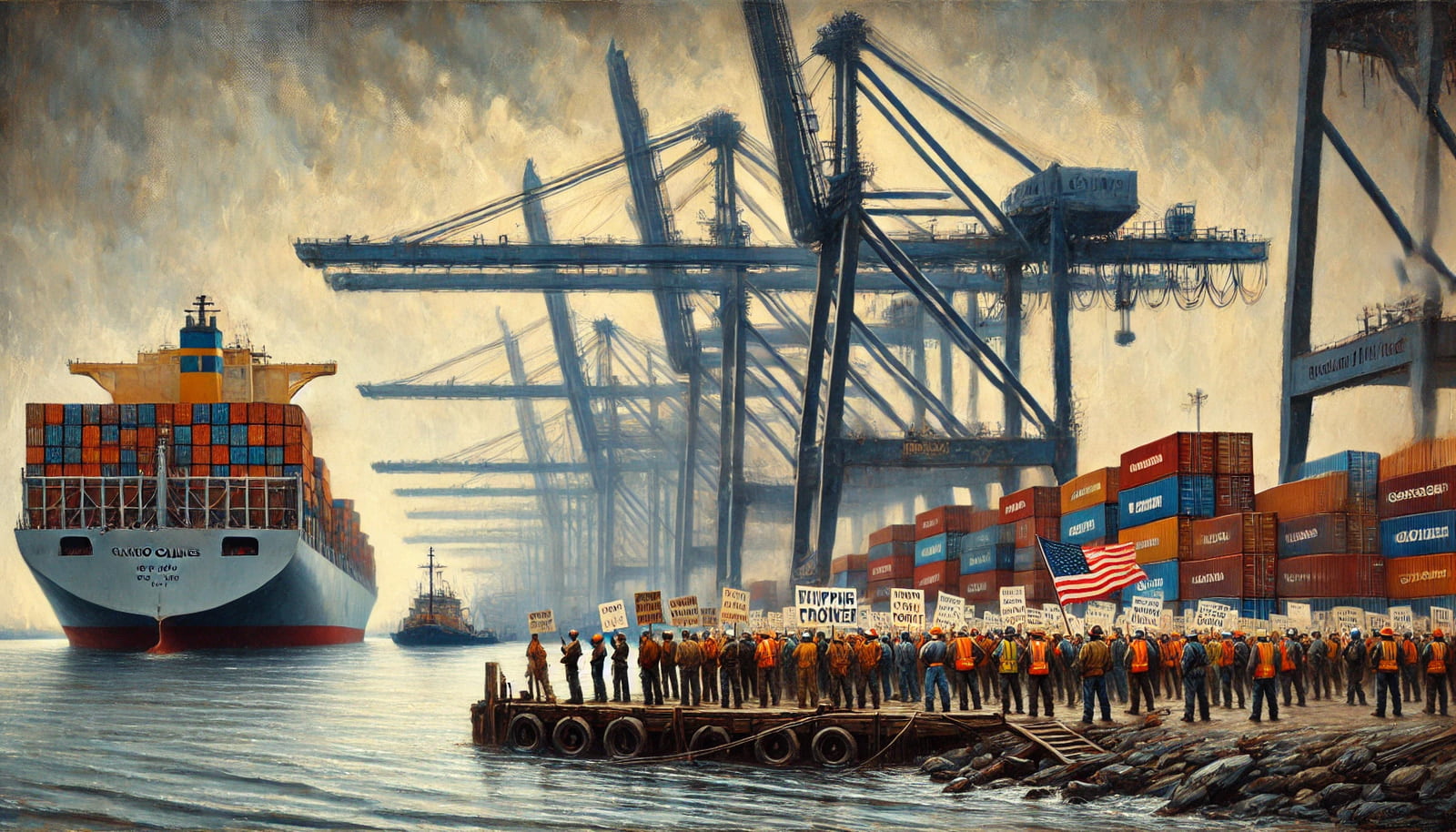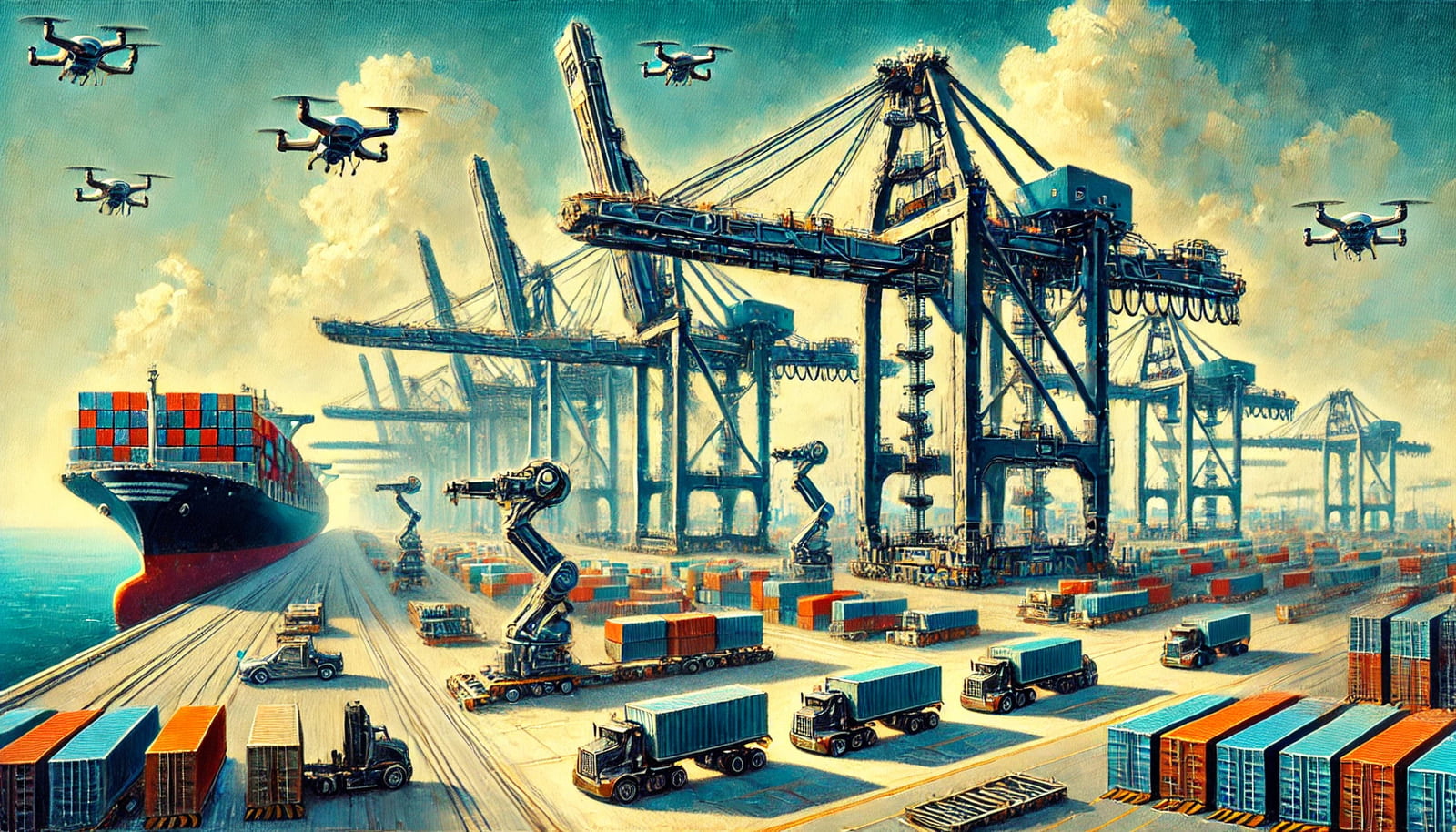
In 2024, the United States witnessed a significant disruption in its supply chain as a result of a nationwide port strike that caught the attention of industries and consumers alike. The strike, which affected several major ports along the West and East Coasts, caused ripples through the global trade system, with containers piling up and goods delayed for weeks. But how did the situation escalate to this point, and what measures were taken to resolve the crisis?
Background: Labor Tensions and Preceding Events.
The roots of the 2024 port strike can be traced to longstanding issues between port workers and the port operators, particularly in regard to wages, working conditions, automation, and job security. Labor unions, particularly the International Longshore and Warehouse Union (ILWU) on the West Coast and the International Longshoremen's Association (ILA) on the East Coast, had been engaged in contentious negotiations with the U.S. Maritime Alliance (USMX) and the Pacific Maritime Association (PMA) for over a year.
Several key factors contributed to the escalation:
- Wage Disparities: While union workers were seeking wage increases to match inflation and the rising cost of living, port operators were pushing for more conservative wage adjustments, citing economic pressures and competition from international ports.
- Automation and Job Security: One of the biggest sticking points in the negotiations was the increased automation of port operations. Port operators had been pushing for more automated systems to enhance efficiency and reduce costs, but workers feared that automation would result in widespread job losses.
- Safety and Working Conditions: With port activity ramping up since the COVID-19 pandemic, labor unions had been advocating for better safety measures and more manageable work hours. They argued that the boom in online shopping and supply chain demands had led to overworked employees and unsafe conditions.
- Expired Contracts: By early 2024, contracts between the unions and the port operators had expired without resolution, leading to increased frustration among workers. While there had been temporary extensions in late 2023 to allow negotiations to continue, no concrete agreement had been reached.

The Strike Begins: June 2024.
By June 2024, tensions reached a boiling point. Union representatives declared that negotiations had broken down after repeated attempts to settle disputes on wages and automation. In response, workers at key ports in California, including the Ports of Los Angeles, Long Beach, and Oakland, walked off the job. Soon after, workers at East Coast ports, including New York and Savannah, followed suit in solidarity.
The result was an immediate and dramatic slowdown in the movement of goods in and out of the United States. Shipping lines were forced to divert vessels, some choosing Canadian or Mexican ports as alternatives, while others remained anchored offshore, waiting for the strike to end. The disruption led to delays in the delivery of essential goods, from electronics and clothing to food and medical supplies. Consumers quickly felt the impact as store shelves emptied and prices surged.
The Economic Impact.
The strike had a wide-reaching economic impact, exacerbating inflationary pressures and causing delays in the global supply chain. It was estimated that each day of the strike cost the U.S. economy billions of dollars, not to mention the ripple effects on global trade partners. Small businesses, already reeling from inflation and supply chain disruptions from the pandemic, were hit particularly hard, as many relied on timely imports to stock their shelves.
Major industries, including retail, automotive, and manufacturing, felt the brunt of the strike. For example, automakers, which depend heavily on imported parts, faced significant production delays, forcing temporary plant closures. Additionally, agricultural exports, such as soybeans and grains, were stalled, hurting American farmers and exporters.

Resolution: The Path to an Agreement.
Despite the gravity of the strike, both sides understood the economic implications of allowing the dispute to drag on indefinitely. After weeks of shutdowns and significant pressure from businesses, government officials, and the public, both the ILWU and ILA resumed negotiations with port operators in July 2024. Key players, including representatives from the Department of Labor and the Biden administration, intervened to help broker a deal.
Several factors contributed to the eventual resolution:
- Government Mediation: The Biden administration, wary of the broader economic impact, stepped in as a mediator. Government officials facilitated meetings between union leaders and port operators, urging both sides to make concessions. The administration made it clear that a prolonged strike could trigger even deeper economic fallout.
- Compromise on Automation: One of the most contentious issues, automation, was resolved with a compromise. Port operators agreed to slow the implementation of new automated systems while simultaneously offering retraining programs for workers whose jobs might be at risk. Additionally, workers were promised greater involvement in decision-making processes regarding future technological changes.
- Wage Increases and Safety Improvements: Port operators conceded to the unions' demands for wage increases that would better reflect inflation. In addition, agreements were made to improve working conditions, with commitments to hiring more staff to reduce workloads and implementing enhanced safety protocols.
- A Longer-Term Contract: To avoid another such disruption in the near future, both sides agreed to a longer-term contract—spanning up to six years—providing stability and predictability for both workers and port operators.
Aftermath: Lessons Learned and the Road Ahead.
The 2024 port strike underscored the delicate balance between labor demands and economic realities in a globalized world. It highlighted the vulnerability of supply chains and the importance of worker rights and job security, especially in a world increasingly driven by automation.
The strike also brought into focus the importance of government involvement in resolving labor disputes that have far-reaching consequences beyond the involved parties. Moving forward, the port operators and unions agreed to ongoing dialogues to avoid similar disruptions in the future.
While the strike caused temporary upheaval in the supply chain, the resolution provided important lessons for both sides, ensuring a more sustainable future for U.S. port operations, workers, and the global economy. As the world continues to evolve with technological advances, the key will be balancing efficiency with the protection of labor rights—something both the unions and port operators will need to navigate carefully in the years ahead.


